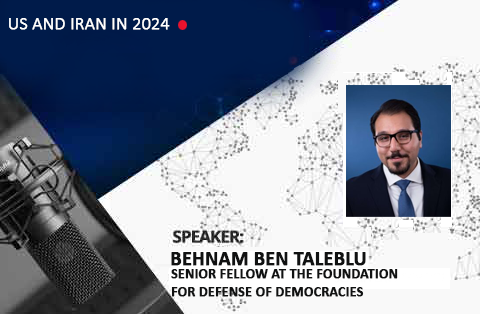The Islamic Republic of Iran is dying a sad, angry death. In its place, we will probably get what one cleric has called the “Islamic Government” of Iran.
The difference is not merely semantic. The genius of the Islamic Republic -if we may call it that — was that it blended competing notions of legitimacy, as well as a myriad of competing institutions. Unelected authorities, the most important of whom was the Leader, co-existed with quasi-democratic bodies such as the parliament (majles) and the office of the President. The latter was the only nationally elected leader, and from the outset the President’s popular authority suggested a potential conflict with the authority of the un-elected Leader.
That conflict emerged in 1980, when Iran’s first president, Abdolhassan Bani Sadr, collided with the hardline clerics. After Bani Sadr fled Iran, successive presidents became partners with the Islamic Republic’s founding Leader– Imam Khomeini.
Things began to unravel with Khomeini’s death in 1989. In part through his own charisma, Khomeini had obscured the political system’s many internal tensions. But with his passing, a struggle emerged within the revolutionary ruling family over whether the Islamic Republic should be more Islamic and clerical or more republican and popular. This struggle constituted Act 1 in a prolonged drama.
Those who came to favor more democratic values had a paradoxical pedigree. Hailing from the “Islamic Left,” this group of clerics and lay leaders favored an eclectic vision that was part Marxist, part existentialist, part Islamic, and part democratic. Led by then Prime Minister Mir Hossein Mousavi, the Islamic Leftists angered then President Ali Khamane’i by advocating a quasi-socialist economic agenda. Elevated in 1989 to the position of Leader, and with the backing of then President Ali Akbar Hashemi Rafsanjani, in 1991 Khamane’i and his allies in the Clerical Right purged the government of many Islamic Leftists. Among them was a fairly unknown intellectual named Mohammed Khatami.
Shift to 1997. Having paid a high cost for associating himself with the heavy-handed actions of the Clerical Right, Rafsanjani encouraged Mousavi to run for president. He declined, and in Mousavi’s place, Khatami launched a bid for the presidency.
So begins Act II. During and after his campaign, Khatami boldly advocated more democratic values. Moreover, he attracted a reawakened, if disparate and politically un-experienced, movement of young people. Suddenly, the president became a vehicle for a mass movement that however “reformist” in its tactics, was from the vantage point of the Clerical Right, strategically oriented to a revolutionary agenda of democratic change.
This was totally unacceptable to Iran’s self-appointed guardians. From 1998 through early 2005, the Clerical Right moved to shut down the Reformist movement.
Act III began in 2005 with the election of Mahmoud Ahmadenejad as President. Mayor of Tehran, a PhD in Traffic Management, and, most notably, a security operative from the Revolutionary Guard, he spoke for a counter-elite of urban and rural poor, war veterans and state supported thugs in the mass based, basiji or mobilization forces.
All of these groups–who constitute Iran’s New Right– hated the more Western-oriented middle class students, private sector businessmen and urban professionals who constitute the Reformist movement. Attaching themselves to a wing of the clerical establishment that shared these resentments, and fueled by rising oil revenues, Ahmadenejad’s allies sought to purge the state of all clerical and lay forces that advocated the mix of Islamic and democratic rule that had once defined the Islamic Republic.
Act IV came on Saturday June 12, 2009 when Ahmadenejad filched the election from Mousavi. Let’s be clear: the election had to be stolen because otherwise Iran’s New Rightists would have been confronted by a democratically elected president determined to revive republican values and institutions. The only remaining option was the Big Lie, i.e. that it was Ahmadenejad who had secured more than 60% of the vote, and who thus had the “people’s mandate.”
There has been a lot of talk in the Western media of the power of the “mullahs.” But the New Rightists hate most clerics because they have the capacity to wield independent authority. That is why Ahmadenejad must be delighted that Khamane’i has thrown his support behind the New Right. In doing so, the Leader has antagonized many of his turbaned allies, including Rafsanjani. But no matter: what Khamane’i gets (or thinks he gets), is something close to absolute power.
Every revolution ends up devouring its children. In this case, the menu includes many grandchildren as well. In the coming days we will probably see the Final Act: a systematic purge of anyone who opposes Iran’s new Caesar. Ahmadenejad has promised as much, and he is bound to deliver. After all, he has the people’s support!
Daniel Brumberg is acting director of U.S. Institute of Peace’s Muslim World Initiative and associate professor at Georgetown University.



